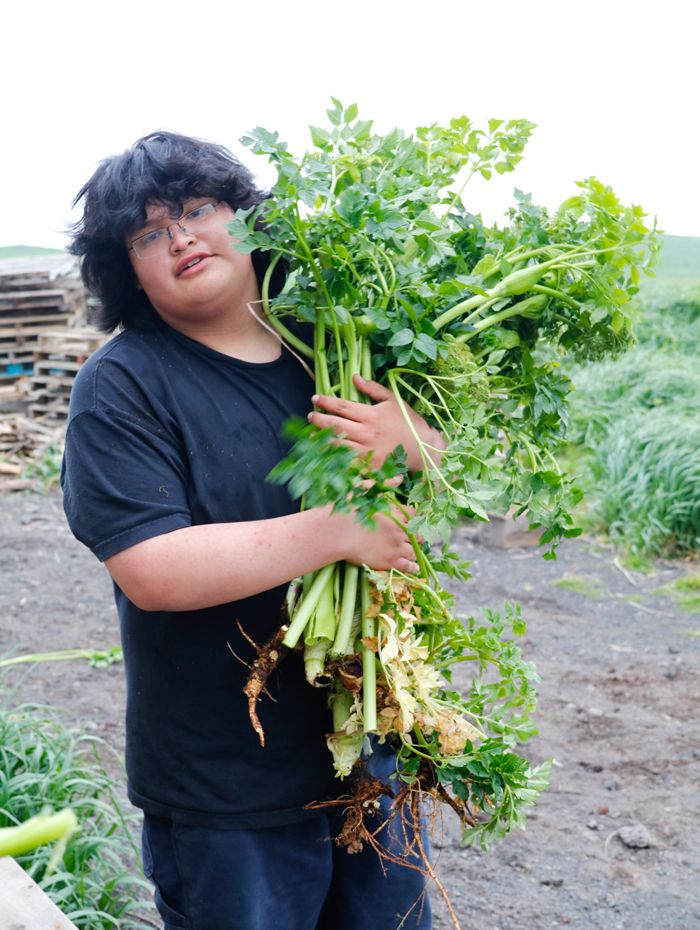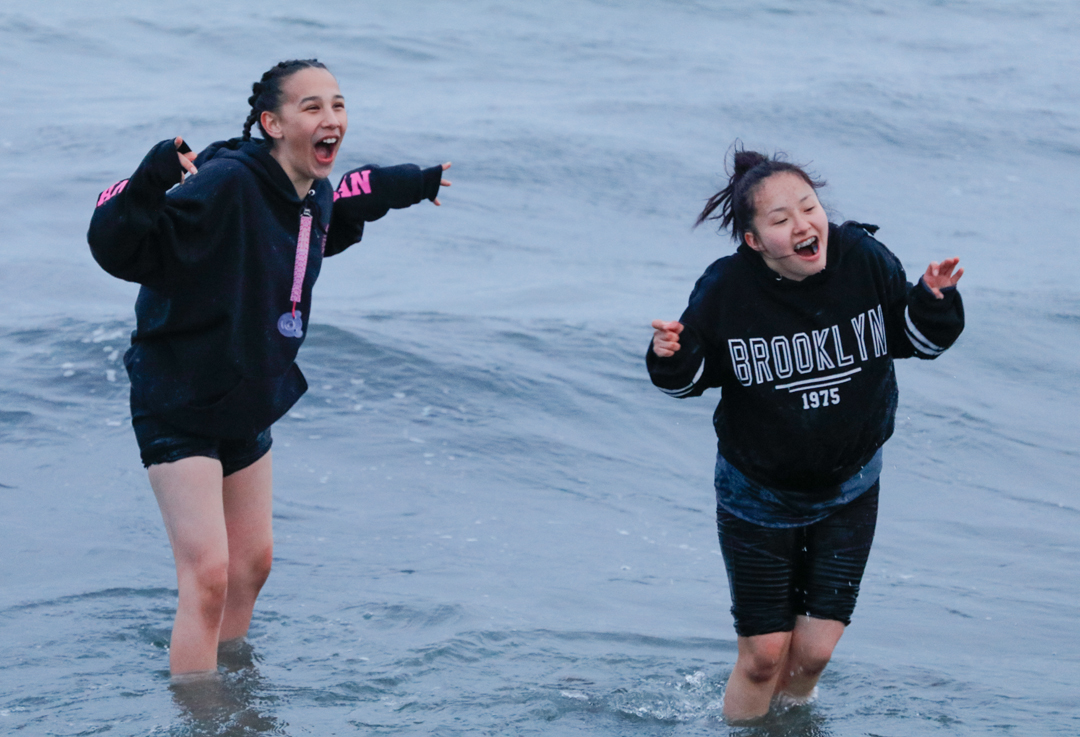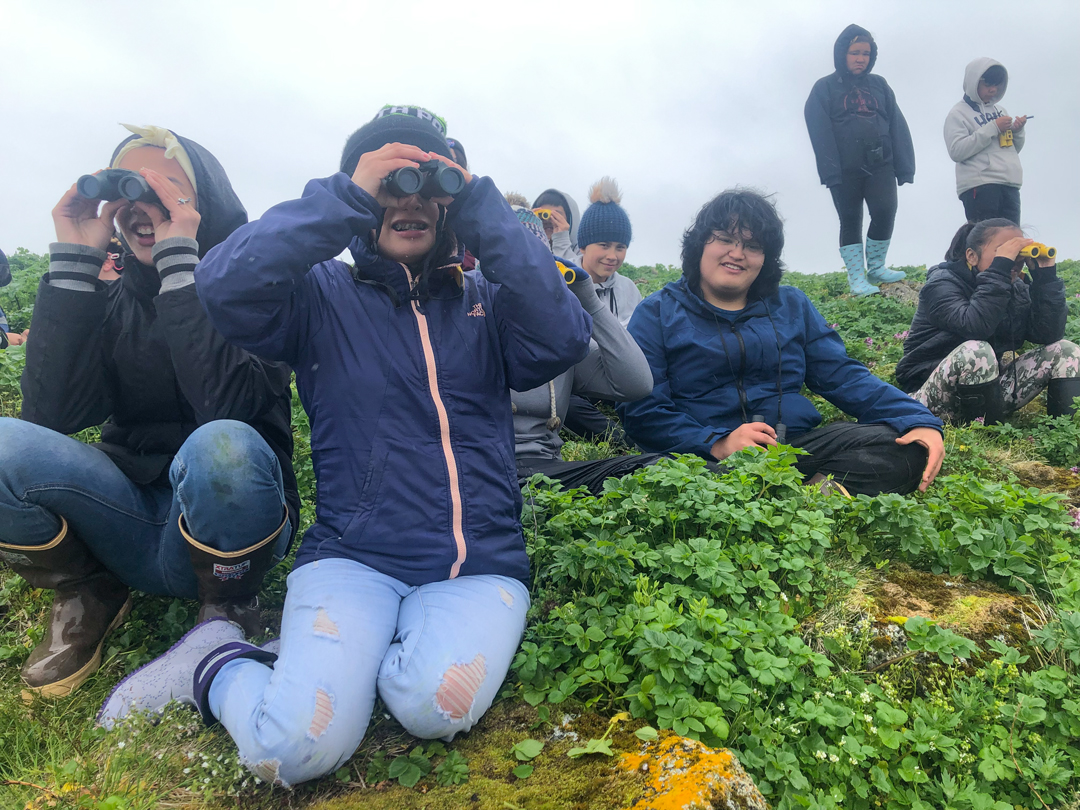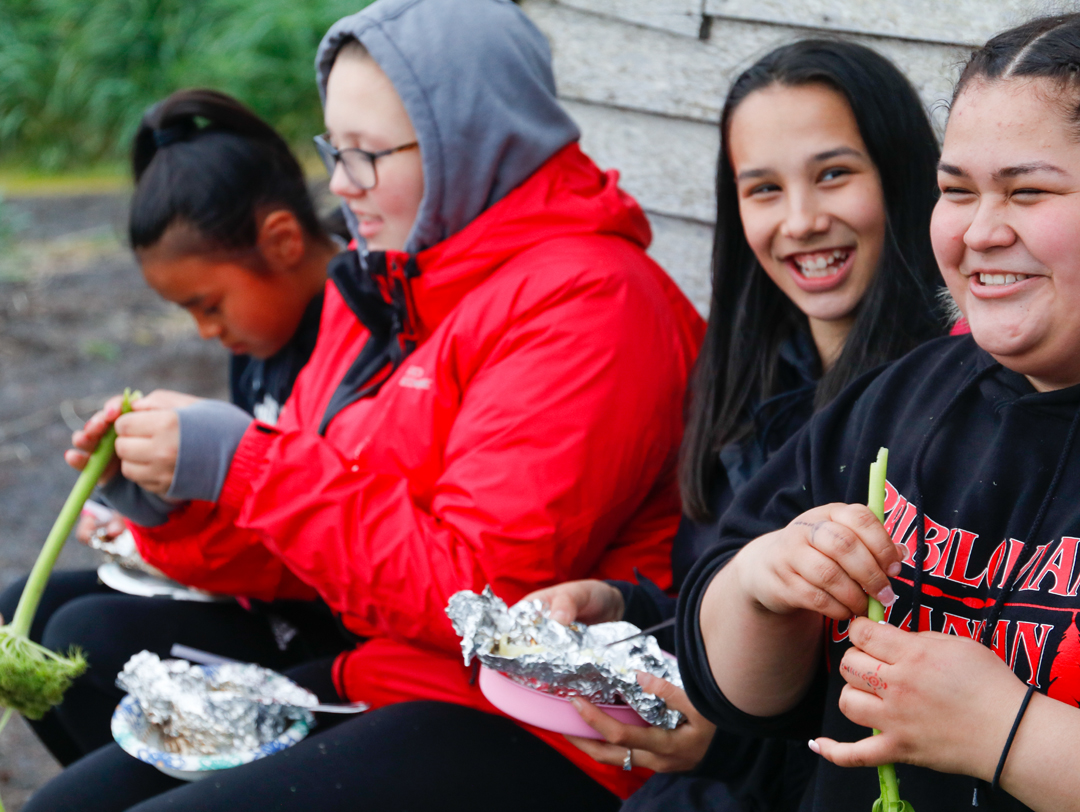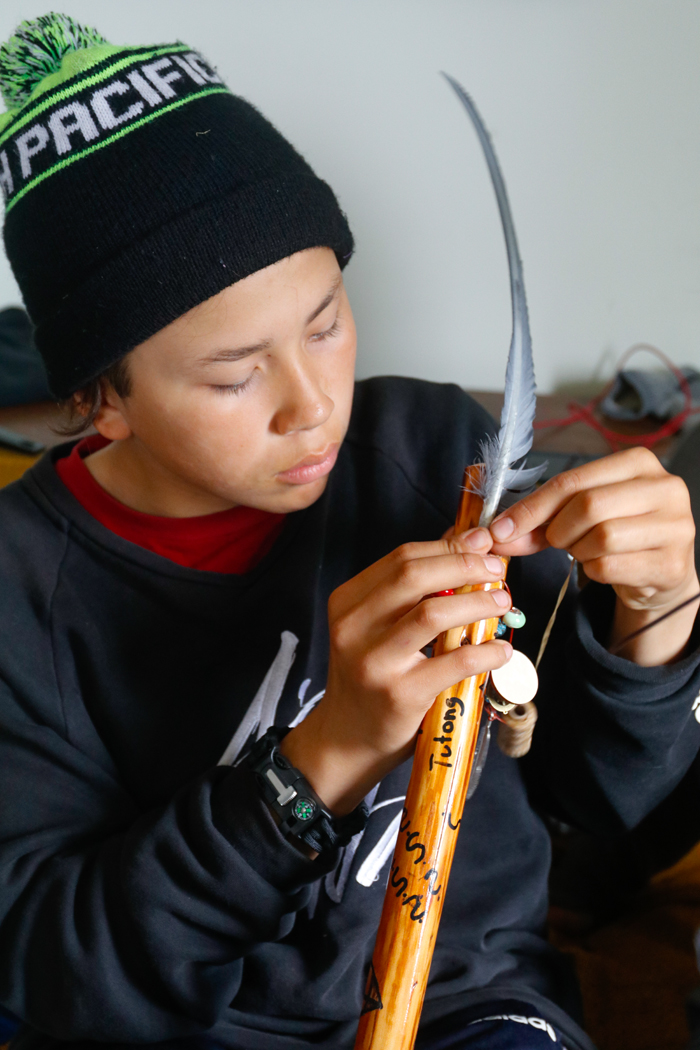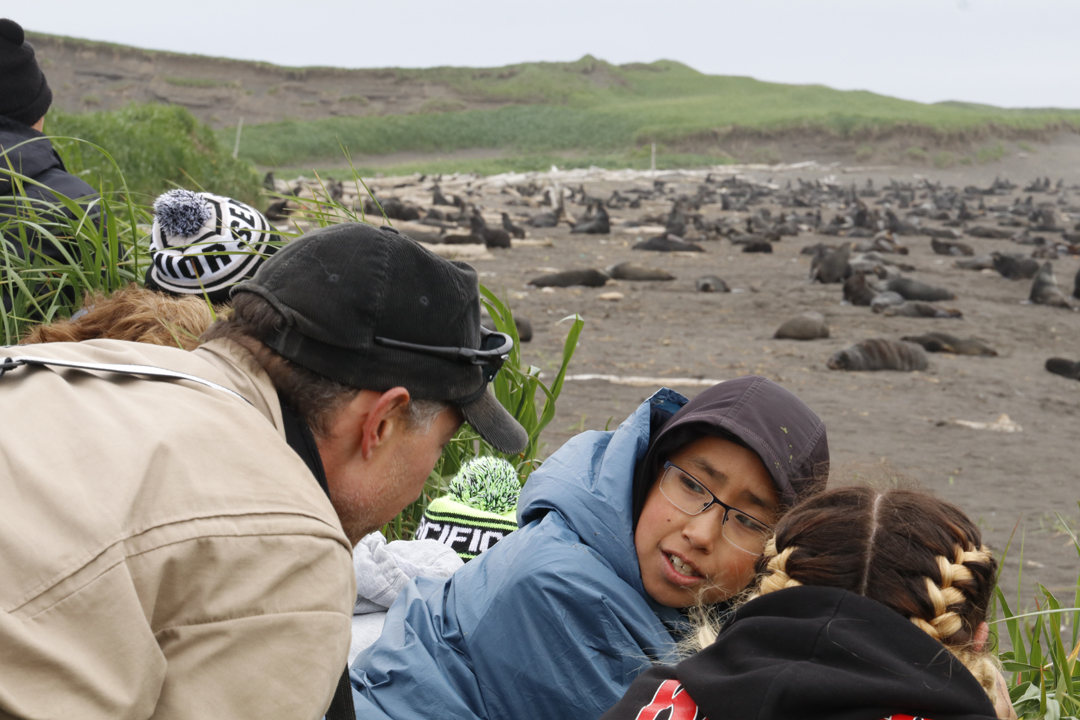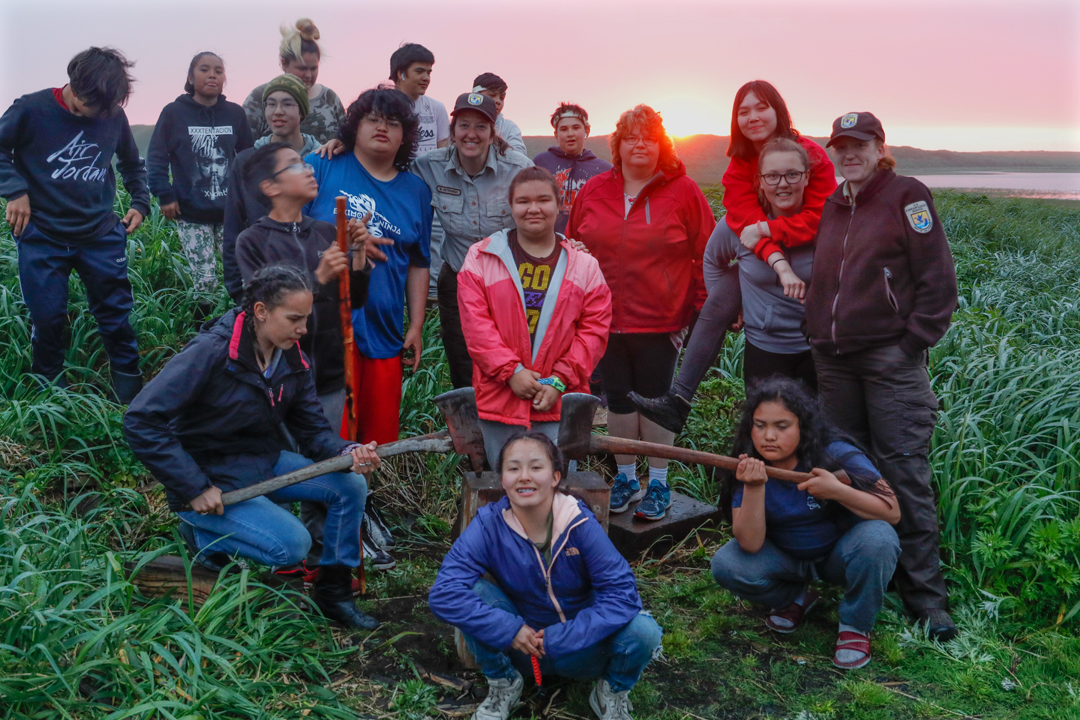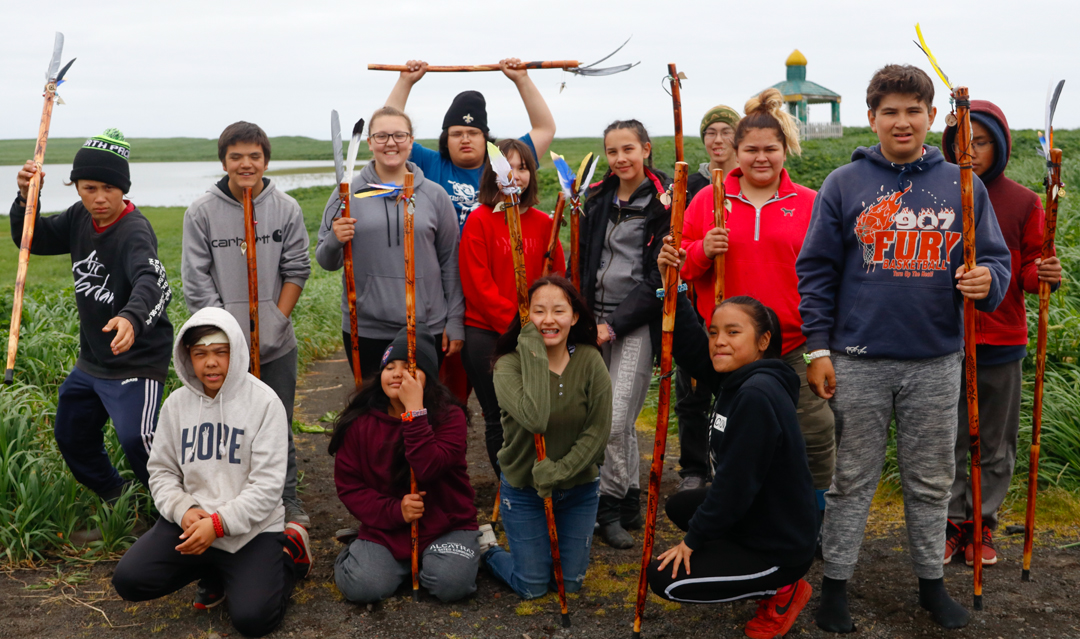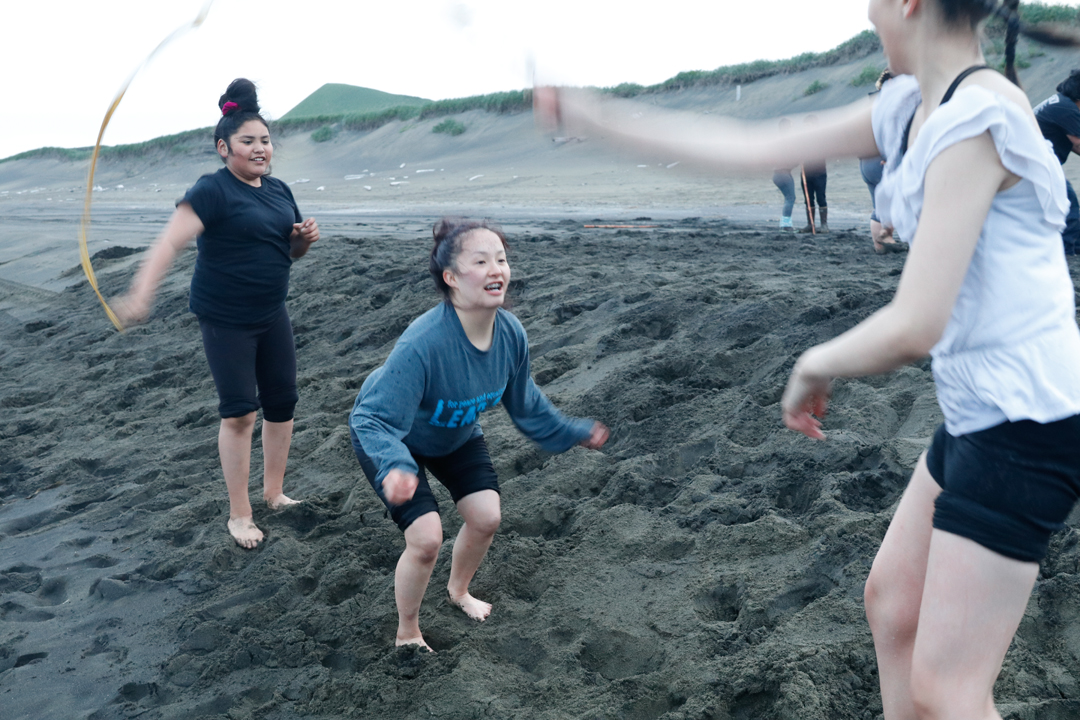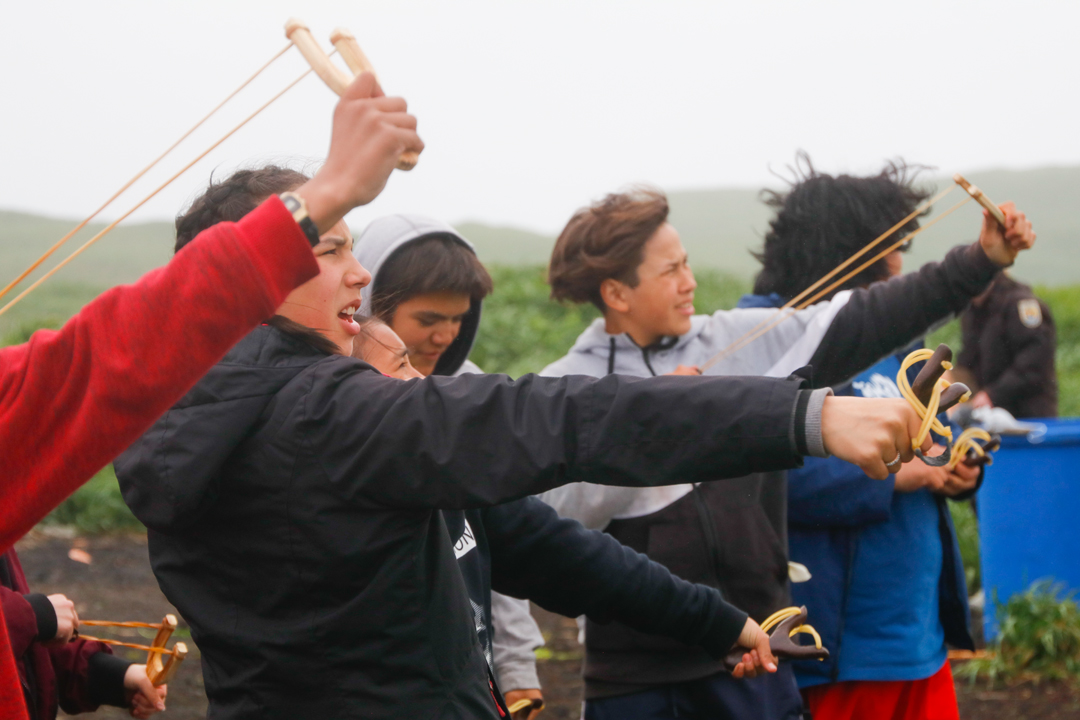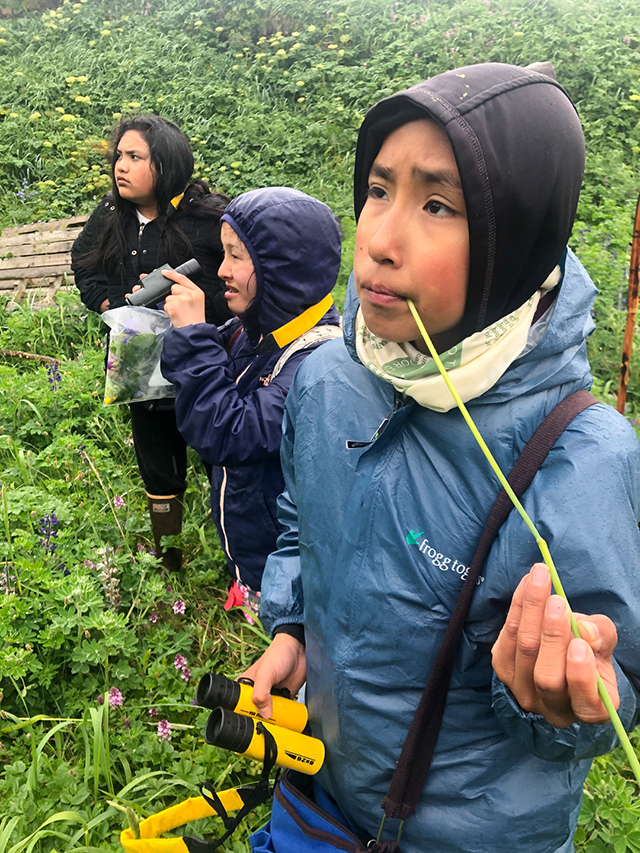Camping Trip
The overnight camping trip was a new offering this year, aimed at the older kids who had already finished 6th grade. We had activities focused on seabirds, but with a strong element of adventure and survival as well. Throughout the weekend campers completed tasks and challenges to earn tokens that they would add to their wooden staffs at the end of camp.
On Friday evening Mike Williams, manager and biologist for NOAA, told us all about fur seal research on the island as well as introducing his two interns who are part of a program to get Alaska Natives involved in the sciences. Some of our campers would be good candidates for this program. We learned all about capturing fur seals for scientific purposes and how to approach the animals at close range. Staying downwind, we took team of 5 to approach the edge of a large seal haul out. We found two tagged, target animals, but they were in the water or right on the edge so Mike and his team were not able to attempt a capture.
The group came across a large pile of Short-tailed Shearwaters that had been stranded and brought to shore for counting by the Tribal ECO office. Although a sad sight, it was a teaching moment and an opportunity to learn about beached birds, monitoring programs and a specific species that we do not emphasize in Seabird Camp.
It was time for a late dinner which meant building a fire. We all had a lesson on starting a fire with a striker bar that sent sparks onto Vaseline-coated cotton balls. Each team of two had to prove their fire-starting prowess before being awarded the fire-starter charm for their staffs. Brisk wind helped make the conditions challenging.
While the halibut dinners were cooking Chauncey arrived out of nowhere with armfuls of wild celery, plopped them down and proclaimed “Aleut Salad!”
Believe it or not, the kids considered midnight a suitable time to go to the beach and play in the cold water and lapping waves. We were visited by several furs seals as the kids ran in and out of the shallows. Fortunately, we had a bonfire blazing back at camp to warm up. It was a big day, so it shouldn’t be too surprising that the kids were in bed by 3:30 a.m. Usually they would stay up until 5 a.m. on a camping trip.
The next day saw lots of lessons about wilderness survival including a priorities list. We learned about the 3-3-3 rule that prioritizes immediate needs. Shelter and first aid were high on the list and beef jerky was toward the bottom since humans can potentially survive for 3 weeks without food.
Our next big activity was a scavenger hunt using GPS and compass for navigation. Campers found 6 station using GPS and completed biological field work and learned information about seabird at each station.
Our rainy hike to Hutchinson Hill gave us an opportunity to collect flowers that we later identified and pressed to make specimens. From the hilltop we looked down on a large seal rookery and learned more about fur seals and island history. We also found a Rosy Finch nest with three chicks. They each had a few tufts of down poking out of their smooth contour feathers.
Campers learned about slingshot use for survival and practiced their new skills on fake rats. The rodents are a threat to the island’s seabirds. Several of the campers showed pinpoint accuracy in hitting the figurines with rocks.
As light faded, we all worked on making survival bracelets back in the camp house. The complex weaving was a way to have useful parachute cord on hand in the case of an emergency. The buckle contained fires starter, compass and other essentials.
We had to pour water on the campfire at 3:30 a.m. to get the kids to go to sleep. The next day would be devoted to working on our staffs and cleaning up camp. Many of the campers expressed regret that they couldn’t stay longer but also admitted that they could use a shower.
